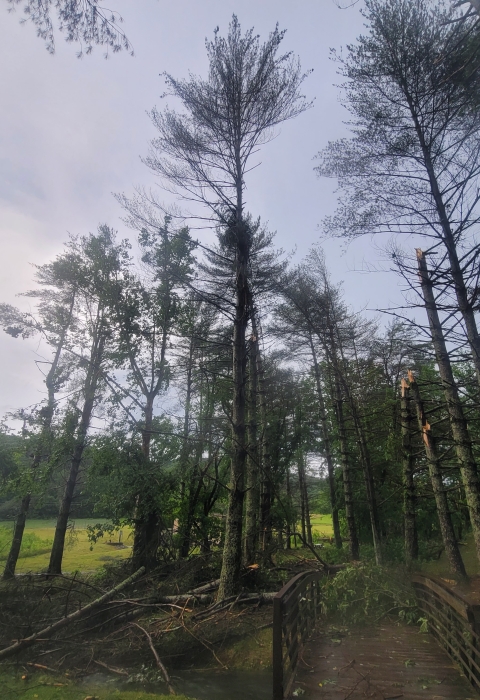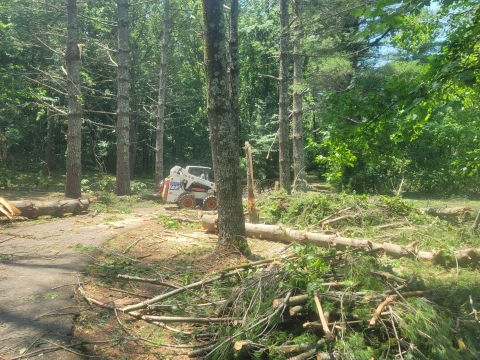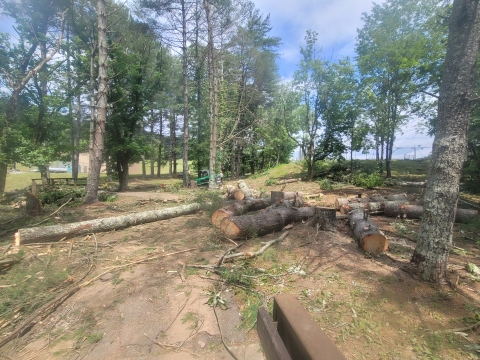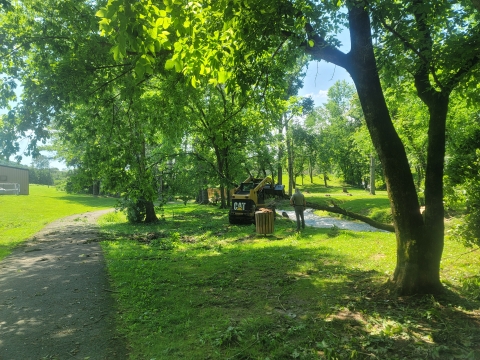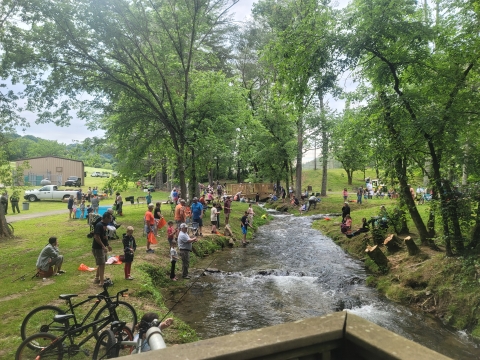Dale Hollow National Fish Hatchery supplies mitigation, conservation, and public engagement. Annual mitigation production is 1.2 - 1.6 million fish a year to provide coldwater fish (brown/rainbow/brook trout) that thrive in the cool downstream waters coming out of flood control and power generation reservoirs throughout middle Tennessee along with some reservoir stocking of those trout plus some cutthroat and lake trout projects. Current conservation efforts include 14 species of endangered mussels reared in partnership with the Tennessee Wildlife Resource Agency and Barren's topminnows reared in partnership with Ecological Services. The hatchery and Friends of Dale Hollow National Fish Hatchery, a non-profit group, host 3-7 station outreach/education events like fishing derbies, fly fishing, and lake boating safety. Approximately 40,000 yearly visitors tour the hatchery, get guided education, and fish in the hatchery creek.
Several years of storms have claimed several trees at Dale Hollow National Fish Hatchery. There is lingering work to be done like replanting new trees, rebuilding the hatchery perimeter fence, rebuilding 6 picnic tables and public use benches, upgrading the hatchery fishing pier, shoring up the creek bank, filling erosion pits, and adding safety rip rap.
Recently two large trees fell on the fishing pier down at the creek which took out the front rail and front-facing foundation joists. The hatchery creek area is shaded, peaceful, full of trout, and part of a forested hiking loop that loops over to Obey River. For anyone familiar with Dale Hollow, the hatchery creek fishing area is a primary point of interest and is used as a focal point for events. Hatchery staff is scrambling and working every day to try to find solutions to recover the creek area storm damage, make it safe for visitors, and come up with a strategy to bring it back to the cool oasis of nature it was before the age of the trees and weather took their recent toll.
A small grant helped us fell six hazardous trees and remove four that toppled in the early spring heavy rainstorm. Between the partnerships, volunteers, and a lot of hard work, the funds helped create the basis of the creek area recovery effort at Dale Hollow. There is still a lot of work to do and the team is going to keep grinding away at finding solutions to restore a community treasure.
Future Repair & plans:
- Put rock and dirt along the top of the riprap erosion areas, compact, and grow plants with roots to help add structure structure
Something temporarily or permanently constructed, built, or placed; and constructed of natural or manufactured parts including, but not limited to, a building, shed, cabin, porch, bridge, walkway, stair steps, sign, landing, platform, dock, rack, fence, telecommunication device, antennae, fish cleaning table, satellite dish/mount, or well head.
Learn more about structure . - Think creativity when building fish stations, benches, tables, and information signs that add to the quality of the site and make use of the tree stumps (being careful not to make it look so manipulated that it takes away from the nature).
- The station is optimistic about being able to implement a patch repair to the pier, but we'll need a little time to rebuild it fully.
- Aging trees at the creek will continue to be an issue, the current plan is to take down the worst trees when vital. There are an additional 22 Virginia pines that are nearing end of life, but the station is trying to take a considerate sequential approach to replace/replant trees before we strip the creek bare of cover.
- We'd like to build a kiosk and covered fishing pier someday if we can get skilled volunteers and more material.
- Re-planting trees near the creek – evergreen, native, must be able to endure wet river-connected soil. We are not sure at this point of the trees, configuration, support, or sources.
- Planting/supporting native evergreens over 15 acres of open field. Will look into planning and group effort.
- Other options: Developing nature trails, native gardens, education systems.
- Communications such as outreach events, US Fish & Wildlife Service National quarterly reports, Department of Interior news articles, hatchery website updates, congressional representative, state government, and local news outreach.
